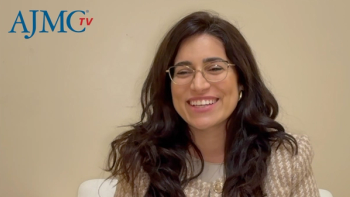
Dr Peter Paul Yu on Progress in the Move Toward Interoperability
Peter Paul Yu, MD, FASCO, FACP, physician-in-chief, Hartford HealthCare Cancer Center, discusses the shift toward interoperability among electronic health record systems and efforts needed to accelerate this shift.
Peter Paul Yu, MD, FASCO, FACP, physician-in-chief, Hartford HealthCare Cancer Center, discusses the shift toward interoperability among electronic health record systems and efforts needed to accelerate this shift.
Transcript
How much progress has there been in the move toward interoperability among EHR systems? What efforts are needed to accelerate the shift?
Most people when they talk about interoperability, they talk about it in the way of how do you get it from one electronic health record (EHR) into the other EHR, and that’s relevant, if the patient is moving from Seattle to Kansas City and you need to move records across, and it’s relevant if you were in a cardiologist's office yesterday and today you’re seeing the orthopedic doctor and you need to move it around. That’s generally what people talk about in terms of interoperability.
From an oncologist point of view, I think it’s somewhat different. From an oncologist point of view, I think it’s more about: how do you get the data that’s in an electronic health record connected to the data that’s in the radiation oncologist’s record, which is driving the Linux, and how do you get it connected to the pathology office, which has their detailed pathology report information? How do you move that into the cancer registry, so you can satisfy your reporting requirements? For oncology, it’s not so much about moving it from one EHR to another EHR, its more about how do we aggregate the whole sum of the patient’s cancer experience in a database?
Having defined that, the bad news is that there’s very little going on there because when you’re talking about one EHR to another EHR, there is a basic data set that’s in common to all your charge. The representation and how its captured is different, but the data is, in theory, similar, and you can move it around. And when you take it out of one EHR, you can dump it into another spot, another EHR. When you’re talking about moving things like genomic data from a precision medicine next-generation sequencing test and you have 500 mutations to report on and there’s not a single landing field for each of those mutations in the EHR, now you have a really big problem. So, I think this is an area that we’ve just started the discussion and awareness of, but I’d say right now we’re far from even recognizing the importance of this need.
Newsletter
Stay ahead of policy, cost, and value—subscribe to AJMC for expert insights at the intersection of clinical care and health economics.





























































